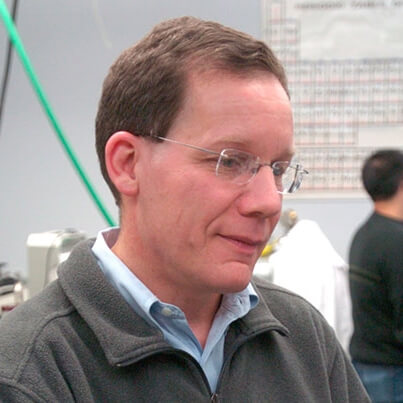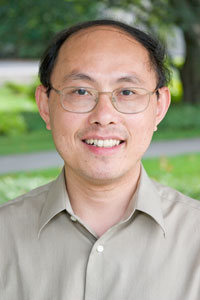News
Charles Lieber, Mark Hyman Jr. Professor of Chemistry. (Photo by Kris Snibbe, Harvard News Office.)
Harvard scientists have created a type of “cyborg” tissue for the first time by embedding a three-dimensional network of functional, biocompatible, nanoscale wires into engineered human tissues.
As described in a paper published Aug. 26 in the journal Nature Materials, a research team led by Charles M. Lieber, the Mark Hyman Jr. Professor of Chemistry at Harvard, and Daniel Kohane, a Harvard Medical School professor in the Department of Anesthesia at Children’s Hospital Boston, developed a system for creating nanoscale “scaffolds” that can be seeded with cells that grow into tissue.
“The current methods we have for monitoring or interacting with living systems are limited,” said Lieber. “We can use electrodes to measure activity in cells or tissue, but that damages them. With this technology, for the first time, we can work at the same scale as the unit of biological system without interrupting it. Ultimately, this is about merging tissue with electronics in a way that it becomes difficult to determine where the tissue ends and the electronics begin.”
Contributing to the work were Robert Langer, from the Koch Institute at the Massachusetts Institute of Technology, and Zhigang Suo, the Allen E. and Marilyn M. Puckett Professor of Mechanics and Materials at Harvard’s School of Engineering and Applied Sciences.
The research addresses a concern that has long been associated with work on bioengineered tissue: how to create systems capable of sensing chemical or electrical changes in the tissue after it has been grown and implanted. The system might also represent a solution to researchers’ struggles in developing methods to directly stimulate engineered tissues and measure cellular reactions.
“In the body, the autonomic nervous system keeps track of pH, chemistry, oxygen, and other factors, and triggers responses as needed,” Kohane said. “We need to be able to mimic the kind of intrinsic feedback loops the body has evolved in order to maintain fine control at the cellular and tissue level.”
Using the autonomic nervous system as inspiration, Bozhi Tian, a former doctoral student under Lieber and a former postdoctoral fellow in the Kohane and Langer labs, joined with Lieber and colleagues to build meshlike networks of nanoscale silicon wires.
The process of building the networks, Lieber said, is similar to that used to etch microchips.
Read the entire article in the Harvard Gazette
Topics: Health / Medicine, Electrical Engineering
Cutting-edge science delivered direct to your inbox.
Join the Harvard SEAS mailing list.
Scientist Profiles
Zhigang Suo
Allen E. and Marilyn M. Puckett Professor of Mechanics and Materials




